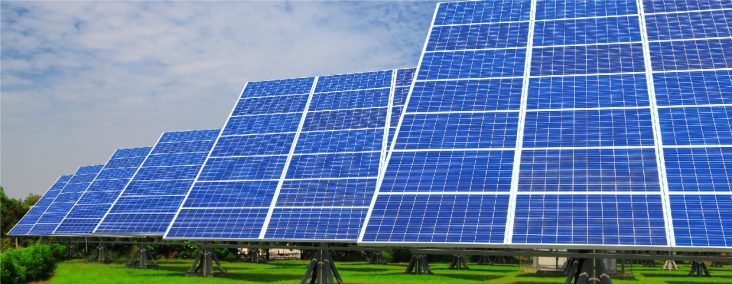Large solar power projects put Arkansas on energy grid; residential generation still rare
by December 8, 2015 7:37 am 487 views

Recently announced utility-scale solar power developments have finally put the Natural State on the map for sun-fueled electric generation, but Arkansas remains well behind the rest of the U.S. in the number of small-scale projects, according to a new report by the U.S. Energy Information Administration
In the past year, Arkansas has announced two utility-scale solar projects, but still has no net power generation from small-scale residential installations that are attached to the electric grid, the EIA said in its Electric Power Monthly.
Small-scale solar photovoltaic (PV) installations, defined by EIA as having capacity of less than 1 megawatt (MW), are usually located at the customer’s site of electricity consumption. These small-scale PV installations are also called behind-the-meter, customer-sited, or distributed generation capacity. Although each distributed PV system is very small — a typical size for residential PV systems is 5 kilowatts (kW) – there are hundreds of thousands of these systems across the country that add up to a substantial amount of electricity generating capacity, the EIA said.
In Arkansas, qualified customers that generate electric power using solar, wind, hydropower, geothermal, or qualified biomass resources can generate and use their own solar powered energy under the state’s net metering rules. According to the Arkansas Public Service Commission, net metered customers that have a generating capacity of up to 25 kilowatts are credited for renewable energy they supply to the grid minus energy they consume.
Just last week, the EIA began regularly reporting monthly estimates of small-scale distributed solar photovoltaic (PV) electricity generation and capacity by state and sector for the first time. Until now, EIA had provided monthly state-level data only for utility-scale generation sources, including solar, but only annual national-level generation and capacity estimates for small-scale solar PV.
According to Energy Department officials, small-scale distributed solar photovoltaic (PV) systems, such as those found on residential and commercial rooftops, have grown significantly in the United States over the past several years.
EIA estimates that total U.S. solar generation (PV and thermal) was 3.6 million megawatt hours in September 2015, with 33% of that total coming from small-scale solar PV. Overall, U.S. solar generation, including both small-scale distributed PV and utility-scale PV and thermal solar generation, was equivalent to about 1.0% of total reported electricity generation from all utility-scale sources in September 2015.
Almost 40% of the distributed PV capacity in the United States is located in California, with the next nine states accounting for another 44%. The remaining 40 states and the District of Columbia, which includes Arkansas, have the remaining combined 16%. California is not only the most populous state, but it is also home to other factors that encourage distributed PV generation: high electricity prices, strong solar resources, and state policies and incentives that support solar PV, the EIA said.
Arkansas’ first commercial-sized solar energy facility came online in September when defense contractor Aerojet Rocketdyne and Arkansas Electric Cooperative Corp. dedicated the $25 million, 12-megawatt solar energy facility at the Highland Industrial Park in East Camden.
Around the same time, the PSC gave the okay for Entergy Arkansas Inc. (EAI) to move forward with an 81-megawatt photovoltaic solar energy generating facility in Arkansas County that is expected to connect to Arkansas’ energy grid by mid-2019.
The so-called “Stuttgart Solar” project will consist of an array of stationary solar panels covering nearly 500 acres and will be capable of generating enough clean energy to power approximately 13,000 homes.
Today’s Power Inc. also announced plans in September to provide a one-megawatt AC solar array for Ozarks Electric Cooperative of Fayetteville. The Springdale-based system, which is scheduled for completion in the second quarter of 2016, will involve approximately 4,080 panels and encompass approximately 3.99 acres on a six-acre site.
The output of the energy produced by the array could provide for the power needs of up to 160 homes, according to Today’s Power, the renewable energy arm of Arkansas Electric Cooperatives.
